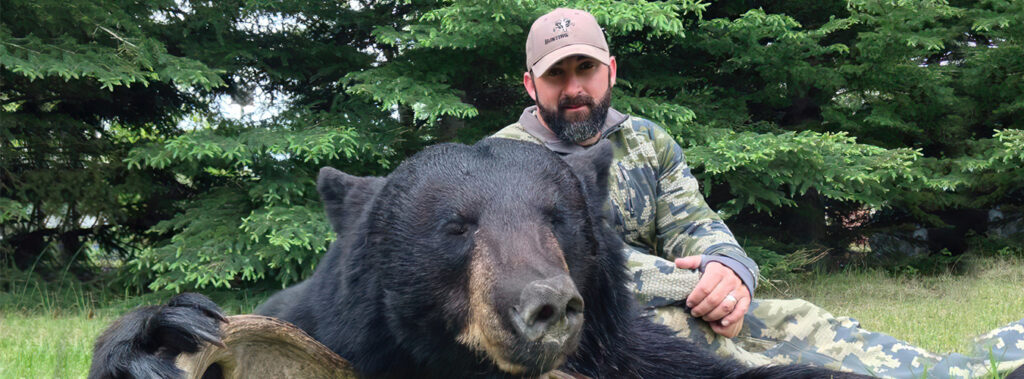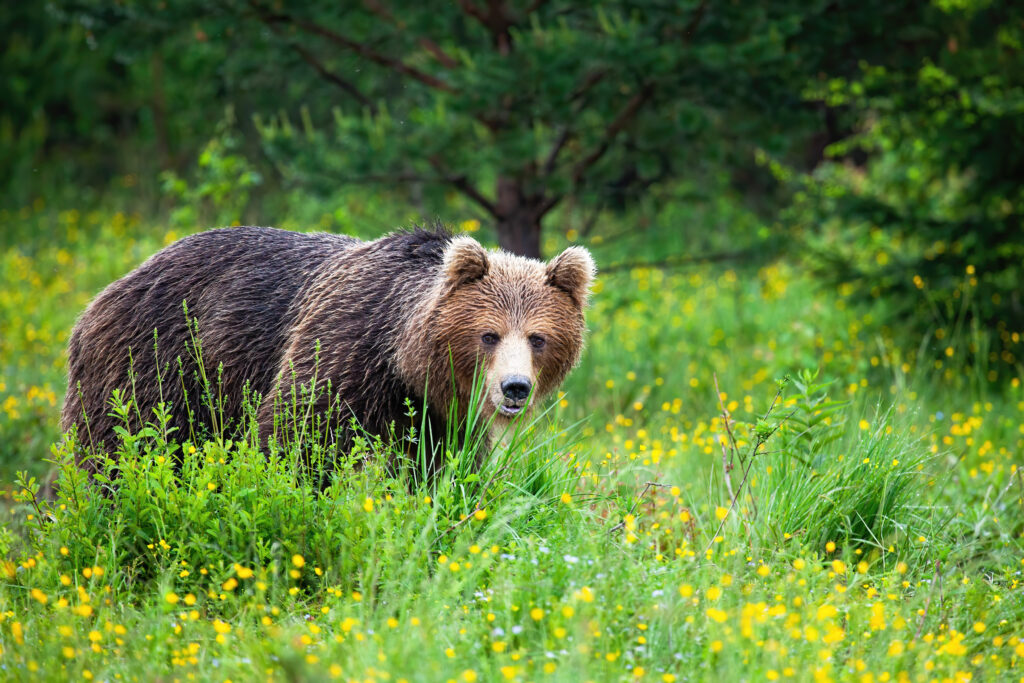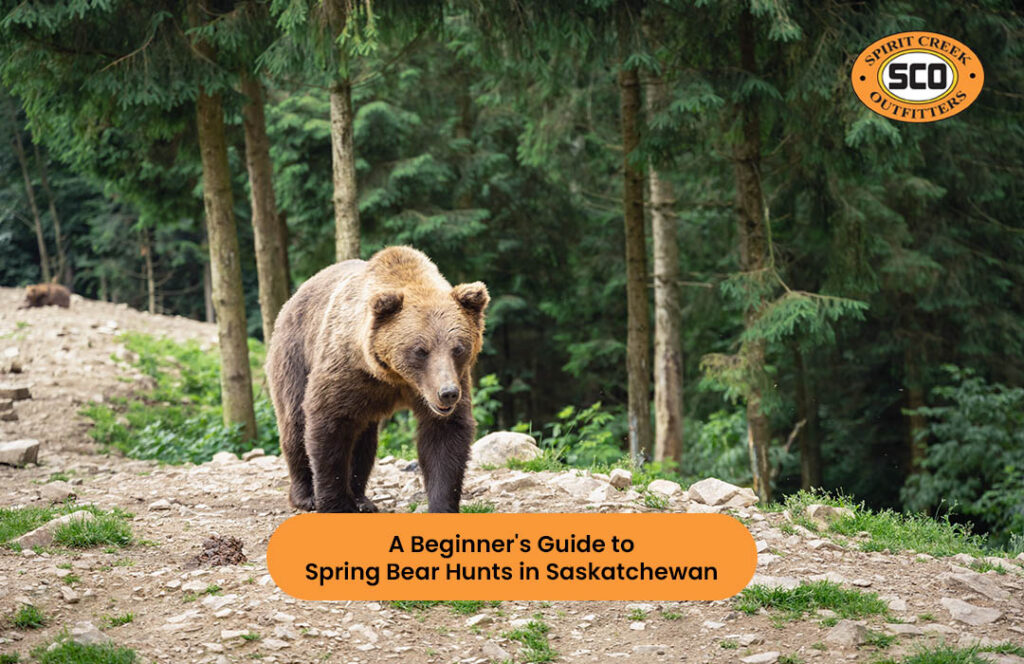Introduction to Saskatchewan Bear Hunting
Saskatchewan is a gold mine for bear hunters, with vast wilderness areas that turn into prime spots for chasing after these magnificent creatures. Here, bear hunting isn’t just an activity; it’s an adventure. The province boasts a large population of black bears, and they roam freely in the lush forests. When you’re thinking about hunting in Saskatchewan, you’re looking at one of the best places in Canada for a thrilling bear hunt. Every spring and fall, hunters gather with high hopes of encountering these beasts. The terrain is challenging, but that’s part of what makes it exciting. Plus, the sense of community among hunters here is strong; sharing stories, tips, and experiences is common. So, if you’re dreaming about a bear hunt that combines breathtaking nature, camaraderie, and the thrill of the chase, Saskatchewan’s the place to be. Just remember, respect for the wildlife and understanding the regulations are key to making your hunt both enjoyable and responsible.
Understanding Bear Seasons in Saskatchewan
In Saskatchewan, bear hunting is a regulated activity, with seasons typically set in the spring and fall to ensure a sustainable bear population. The spring bear hunting season usually opens in mid-May and can extend until late June. This period is favored by many hunters as bears are emerging from hibernation and are more actively searching for food, making them somewhat easier to spot. The fall season, on the other hand, starts in early September and goes through to October. During the fall, bears are preparing for hibernation, focusing on consuming as much food as possible. Hunters find this time advantageous too, as bears are frequently on the move during daylight hours, fattening up for the winter. It’s essential to check the specific dates and regulations each year, as these can change based on wildlife management decisions. Factors like bear population health, conservation needs, and ecological balance play into when and how hunting seasons are set. Whether you prefer the spring or fall for hunting, understanding these seasons helps ensure not only a successful hunt but also contributes to responsible wildlife management.
Spring Hunting: Advantages and Challenges
Spring hunting in Saskatchewan boasts its unique advantages and challenges, making it a preferred season for many hunters. The spring season, generally running from mid-May through June, allows hunters to track bears as they emerge from hibernation, often hungry and searching for food. This period increases your chances of spotting a bear, as they are more active during daylight hours, searching for berries, grasses, and other available food sources.
Advantages: One of the biggest benefits of spring hunting is the bear’s coat condition. After hibernation, their fur is at its thickest and most luxurious, ideal for hunters seeking a prime trophy. Additionally, with the vegetation not fully bloomed, visibility is higher, making it easier to spot and track bears.
Challenges: However, spring hunting doesn’t come without its obstacles. The weather can be unpredictable, with chances of both snow and rain, requiring hunters to prepare for a wide range of conditions. Navigating through muddy terrains or dealing with late snowfall can make access to prime locations challenging. Moreover, the mosquitoes and blackflies start to emerge, adding another layer of difficulty to your hunt.
In summary, while spring hunting in Saskatchewan offers the opportunity to hunt bears with splendid coats and potentially easier spotting due to less foliage, it tests your readiness to handle unpredictable weather and tricky terrains. Prepare well, and this could be your most memorable hunt.
Fall Hunting: A Different Experience
Fall hunting offers a unique experience for Saskatchewan bear hunters. As the leaves change color and the air turns crisp, bears prepare for winter, making them more active. This time of year, they are on the move, searching for food to build up their fat reserves for hibernation. What this means for hunters is a higher chance of spotting bears. The cooler weather also plays to your advantage, making it more comfortable to stay out longer and keep a keen eye without the burden of summer’s heat. Plus, the fall scenery provides a stunning backdrop for your hunting adventure. Strap on your boots, and get ready for an exhilarating hunt amidst the beauty of fall in Saskatchewan.
Best Times for a Successful Saskatchewan Bear Hunt
In Saskatchewan, bear hunting season mainly splits into two, spring and fall. Now, let’s get straight to the point. For those aiming to bag a bear, aiming for spring, specifically in May, is your best bet. Why? Because bears are waking up from hibernation and are in constant search of food, making them more visible and, let’s say, easier targets for hunters. They are less cautious and more focused on filling their bellies, so you’ve got a better chance of spotting them during daylight hours.
Now, if spring doesn’t work for you, fall is your next go-to, specifically in September. This time, bears are in a feeding frenzy, getting ready for their long winter nap. They’re out and about more often, trying to bulk up, which again increases your chances of spotting one.
Let’s be clear, though—weather plays a big role. Too much rain or an unexpected heatwave can throw off your plans, as bears tend to stay hidden in extreme conditions. Also, your own preference for hunting in cooler versus warmer weather might sway your decision on when to go.
Remember, understanding bear behavior and their seasonal patterns is key to a successful hunt. Spring for the hungry, waking bears; fall for the heavy eaters. Pick your season, gear up, respect the wildlife laws, and happy hunting!
Weather Conditions and Their Impact on Bear Activity
In Saskatchewan, the best bear hunting happens when the weather plays along. During spring and fall, bears are most active. Spring hunting is hot because bears just woke up from hibernation, hungry and searching for food. This makes them easier to spot as they roam around. Now, fall is a different game. Bears are getting ready for their winter sleep. They’re out and about, eating everything they can to bulk up. Both seasons have their perks, but here’s the kicker—the weather can be unpredictable. Hunters prefer clear, cool days. Bears tend to move around more when it’s not too hot or too cold. Heavy rain or extreme heat? Not so much. Bears, like us, prefer to stay comfy. So, aiming for those dry, mild days increases your chances of a successful hunt. Remember, though, always check the local weather and animal activity reports before planning your trip. This could make or break your hunting adventure in Saskatchewan.
Preparing for Your Hunt: Essential Gear and Tips
Before you set foot in the wild expanse of Saskatchewan for your bear hunt, you’ve got to pack right. First off, talk essentials – a reliable rifle or bow, depending on your preference. You’ll want a caliber or bow that’s up to the task of a clean, ethical shot. Don’t skimp on optics; a good scope or binoculars can make or break your hunt. Then, let’s talk camouflage. In Saskatchewan’s diverse terrain, blending in is key. Opt for gear that matches the season and surroundings.
Bear hunting also asks for specific gear. Bear spray and a sturdy knife should be within easy reach. Safety’s not negotiable. Next, consider your comfort. Weather can flip on a dime here, so layer up. Waterproof boots, moisture-wicking clothing, and a durable hat are non-negotiables.
Don’t forget the small stuff – a first-aid kit, a reliable GPS or compass, and enough food and water for the day. And, of course, a camera; you’ll want memories of your Saskatchewan adventure.
Lastly, respect the regulations and ensure you’re fully licensed and informed about the area you’re hunting in. Saskatchewan’s wilderness is breathtaking, but it’s also vast and can be unforgiving. Preparation is your best ally. Pack smart, hunt ethically, and you’re setting the stage for a memorable bear hunt.
Licensing and Regulations: What You Need to Know
Before setting off on a bear hunt in Saskatchewan, getting your paperwork in order is crucial. Saskatchewan has specific seasons for bear hunting, usually in spring and fall, to manage populations and ensure ecological balance. To hunt legally, you need a hunting license and a bear tag, which can be obtained from the Saskatchewan government or licensed outfitters. Non-residents must hunt with a guide, which is a rule you can’t skip. Remember, laws and regulations can change, so it’s key to check with the Saskatchewan Ministry of Environment for the most current information. They’ll provide everything you need to know about quotas, legal hunting areas, and the do’s and don’ts of bear hunting. Don’t overlook this step; it’s not just paperwork, it’s your responsibility to ensure a respectful and lawful hunt.
Conservation Considerations for Bear Hunting in Saskatchewan
In Saskatchewan, bear hunting isn’t just about heading into the wilderness and hoping for the best. It’s critical to balance our sportsmanship with responsibility towards conservation. This means understanding the best times to hunt that align with efforts to sustain healthy bear populations. Spring and fall are the primary seasons sanctioned by wildlife authorities for hunting, specifically to manage bear numbers effectively and maintain the ecosystem’s balance. During spring, bears are emerging from hibernation and are on the lookout for food, making them more visible to hunters. Come fall, they’re gearing up for the next hibernation, again increasing visibility and hunting opportunities.
Beyond timing, ethical practices such as adhering to bag limits and reporting all hunts to local wildlife management are crucial. These actions help track population health and ensure that the thrill of the hunt never compromises the well-being of our bear populations or their habitat. Remember, conservation is key to keeping Saskatchewan’s wilderness vibrant and ensuring that future generations can also enjoy the unique experience of bear hunting.
Conclusion: Planning Your Ultimate Saskatchewan Bear Hunt
Planning your ultimate bear hunt in Saskatchewan means thinking about what you want from your experience. Most hunters pick spring or fall, considering bear behavior and the weather. Spring hunts let you catch bears emerging hungry from hibernation. Fall hunts coincide with bears bulking up for winter. Check local guides for the best spots and remember, weather in Saskatchewan is unpredictable, so pack accordingly. Always prioritize safety, respect wildlife laws, and choose a reputable outfitter. Your adventure is what you make of it. Embrace the Saskatchewan wilderness with preparation and respect.



